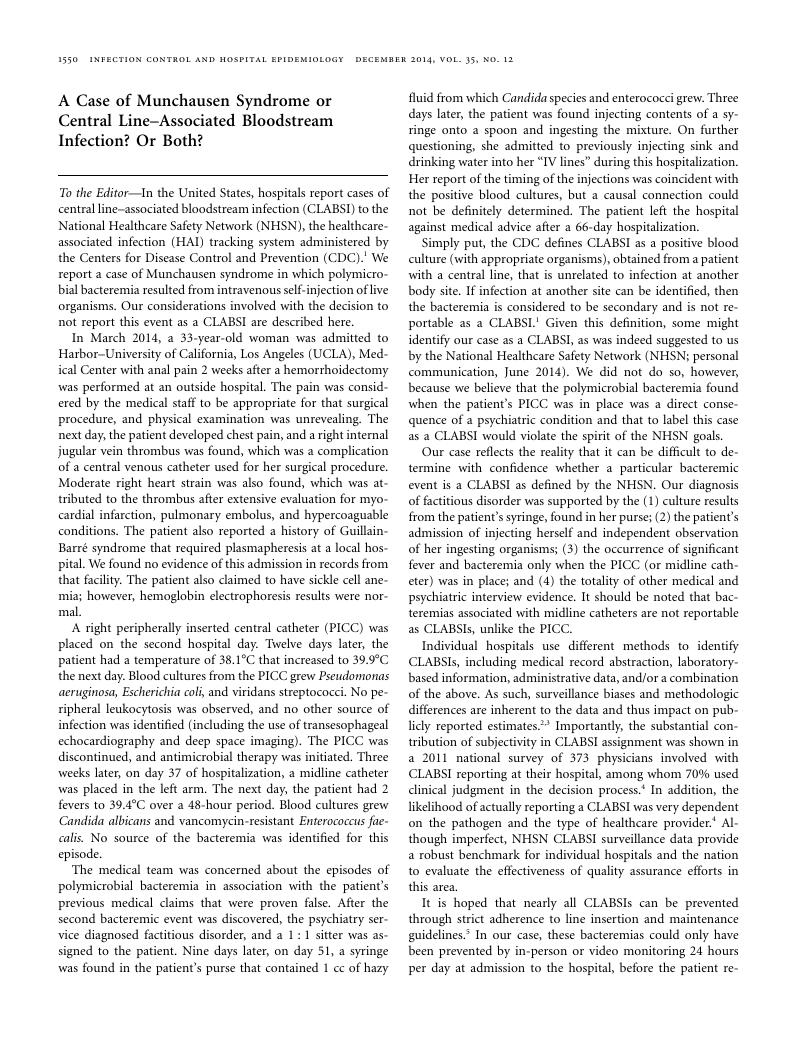Crossref Citations
This article has been cited by the following publications. This list is generated based on data provided by Crossref.
Brooks, Erin
Christy, Nancy E.
Mack, Avram H.
and
McFadden, Mary
2015.
Patients with Psychiatric Disorders Can Also Have CLABSIs: A Response to “CLABSI or Munchausen’s or Both”.
Infection Control & Hospital Epidemiology,
Vol. 36,
Issue. 8,
p.
996.



